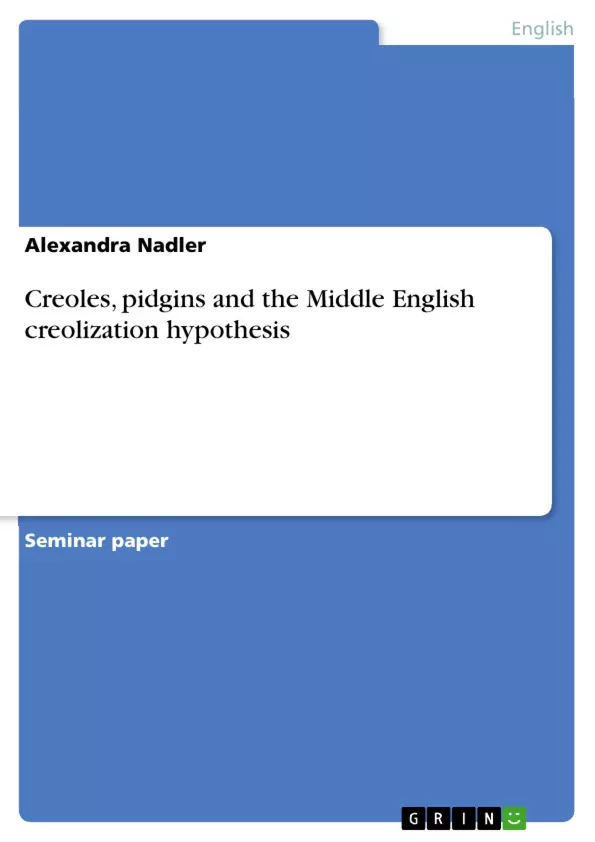In earlier times, many people thought of pidgin and creole languages as broken, inferior and reduced and considered them altered versions of ‘higher’ (European) languages. The speakers of creole languages were frequently perceived as savage and affronting the civilized habits because they apparently could not speak the language fluently enough. It is not very long ago that linguists have actually understood that these languages are not ‘wrong’ but rather ‘new’ languages. In the late 1950s and early 1960s, pidgin and creole studies has become an important field within linguistics and more and more linguists got themselves interested in this field in more recent years. The publishing of numerous books and articles and the offering of various university courses on the topic has furthermore attributed to this development. Nevertheless still there is no precise definition of these groups of languages upon which all scholars can agree. In my term paper I will therefore begin by outlining the problematic situation of the definitions of these terms in order to find an acceptable basis to work with.
Table of Contents
- Introduction
- Pidgins
- Definition
- Types of pidgins
- Example: Lingua Franca
- Creoles
- Definition
- Types of creoles
- The Middle English creolization hypothesis
- Summary of English sociolinguistic history
- Norse influence on English
- Has Middle English undergone creolization?
- Conclusion
- References
Objectives and Key Themes
This term paper aims to explore the complex relationship between pidgin and creole languages and the controversial "Middle English creolization hypothesis." It delves into the definitions and origins of pidgin and creole languages, examining the history of English and its potential creolization due to contact with French and Old Norse.
- The historical development and evolution of pidgins and creoles
- The sociolinguistic history of the English language
- The influence of French and Old Norse on the English language
- The concept of creolization in language development
- The validity of the Middle English creolization hypothesis
Chapter Summaries
The paper begins by addressing the evolution of understanding regarding pidgin and creole languages, acknowledging the shift from viewing them as "broken" to recognizing their unique structures and origins. The paper then dives into a detailed definition of pidgin languages, outlining their characteristics, types, and examples, including their origins and functions. This section focuses on the complex development of pidgins through contact languages and their role in intercultural communication.
The paper then continues to explore the Middle English creolization hypothesis, examining the historical context of English language development and the significant influences of French and Old Norse. This section analyzes the potential creolization of Middle English, exploring the arguments and evidence for and against this hypothesis, and setting the stage for a critical analysis of the validity of this theory.
Keywords
This paper focuses on key concepts like pidgins, creoles, creolization, language contact, Middle English, sociolinguistics, French influence, Old Norse influence, and the history of the English language. It explores the complex interactions between language evolution, cultural contact, and language change, particularly in the context of the Middle English period and its potential creolization.
- Citar trabajo
- Alexandra Nadler (Autor), 2006, Creoles, pidgins and the Middle English creolization hypothesis, Múnich, GRIN Verlag, https://www.grin.com/document/74828



